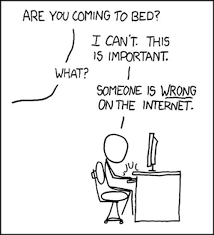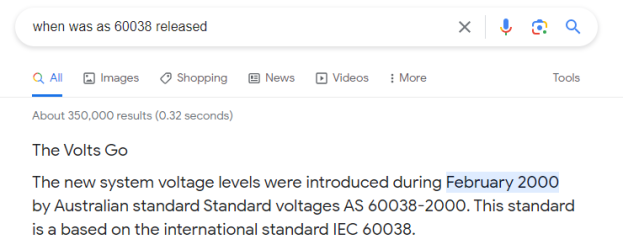You are using an out of date browser. It may not display this or other websites correctly.
You should upgrade or use an alternative browser.
You should upgrade or use an alternative browser.
Renewable Energy Discussion
- Thread starter Cruiser Elite
- Start date
- Status
- Not open for further replies.
TheRealTMA
Senior Member
- Joined
- Jul 13, 2012
- Posts
- 8,340
- Qantas
- Platinum
Pointless for me to respond. Read initial post.Nuclear is just a silly idea for Australi
why ?
- Joined
- Jan 29, 2012
- Posts
- 16,008
- Qantas
- LT Gold
- Virgin
- Red
- Oneworld
- Emerald
RooFlyer
Veteran Member
- Joined
- Nov 12, 2012
- Posts
- 31,219
- Qantas
- Platinum
- Virgin
- Platinum
- Star Alliance
- Gold
SA with the most renewable energy have the highest electricity prices.
Tasmania is about 100% renewables - hydro; not withstanding that the Greens fought it all the way and still refuse to recognise it as renewable.
But geothermal is the best renewable; smallest surface footprint, unimaginably vast resource in Australia. Very expensive to develop, unfortunately.
latawiec
Member
- Joined
- Oct 28, 2023
- Posts
- 267
SA shut down their base load generation (coal PS) that provides the firm capacity that is needed when there is no sunshine or wind. They build some storage battery but its capacity is small and just for 1-2 hrs. So it could be used only when there is sudden loss of some medium generation or transmission line importing power from other states. However, SA is importing a lot of power from the other states, because they do not have much of standby diesel or gas generation but just little battery storage capacity that is insufficient to handle such contingencies. Therefore they have expensive electricity.But why when we are producing excess energy and renewables are so cheap does SA with the most renewable energy have the highest electricity prices.
latawiec
Member
- Joined
- Oct 28, 2023
- Posts
- 267
TAS & ACT do not have any heavy industries and although are connected to the national transmission system, might be easy isolated. But when isolated the costs of electricity might go north.But hydro electricity is not what you were talking about and the 2 examples you have given are the smallest state where increasing hydro would now be impossible and the Territory with the smallest area.
So my point still stands.
And just in case you want to argue through your rose coloured glasses why does the highest price for electricity occur in the countries and states with the highest renewables - solar and wind- in Europe, the USA and Canada. The lowest prices in those are those with supposedly the dearest power source in nuclear.
In WA there are many small isolated isolated systems. They also developed a small independent power supplies for farms or small communities to decommission aging distribution lines that now are prohibitively expensive to replace.
However, networks or power systems that supply heavy industry load needs usually power all 24 hrs per day and that cannot be supplied by intermediate renewable sources. Well, only hydro-pumping like Snowy generation or not existing in Australia geothermal generation seems to be extremely expensive options.
And hydrogen generation sourced by sun or wind sources is still far away.
So, present options seems to be gas turbines or eventually nuclear MSR that just being ordered by many countries including the Middle East for replacing their present gasturbine generation.
latawiec
Member
- Joined
- Oct 28, 2023
- Posts
- 267
Not only Qatar, but also UAE and Saudies.Except the original company building the solar farm in the NT to export to Singapore went into liquidation.
And Qatar has bought 4 1345 megawatt reactors from South Korea. The first 3 are in operation less than 10 years from construction start. The 4th began construction in 2015 and is currently in testing before becoming operational.
And all on budget.
Cost 20 billion for a plant that should last 90 years. And work at 90% efficiency.
Wind farms currently cost 1.3 million to build with at most 40% efficiency and 30 years before needing replacement.
And in addition the UAE also ordered a couple of MSRs from the Rolls Royce (their UK factory seems to be under construction).
There is dramatic increase in already approved and planned nuclear power generation in America, Europe and Asia.
It seems that Australians like Germans (closing nuclear generation and reopening coal mothballed PS) are behaving like blinds
latawiec
Member
- Joined
- Oct 28, 2023
- Posts
- 267
So why on COP 28 representatives of many European and Asian countries disclose their plans regarding use of the nuclear generation to achieve their net zero CO2 commitments?Doesn’t change my views or comments. Nuclear is just a silly idea for Australia.
Why?
latawiec
Member
- Joined
- Oct 28, 2023
- Posts
- 267
Correct, geothermal is expensive, but we have in Australia a lot of hot rocks...!Tasmania is about 100% renewables - hydro; not withstanding that the Greens fought it all the way and still refuse to recognise it as renewable.
But geothermal is the best renewable; smallest surface footprint, unimaginably vast resource in Australia. Very expensive to develop, unfortunately.
Even in Perth, the were some investors with plans on developing geothermal generation but there wasn't any federral or state incentive for them...
All political games, nobody listen even to AEMO...
Before the last federal election the Liberal MPs were afraid to mention nuclear or MSR in their energy policy and considered this subject too difficult or risky...
latawiec
Member
- Joined
- Oct 28, 2023
- Posts
- 267
Well, nobody is against such storage or utilisation of energy.There's all sorts of storage technologies under development like thermal energy storage. Solid state molten sand/salt/silicon batteries, or even just water or recycled oil thermal energy storage, all kinds of clever stuff.
However, these are small amounts of energy and also quite costly storage.
And these will not provide sufficient capacity of energy needed 24 hrs per day to operate our heavy industries and commercial demand, power to operate towns, cities, ports and airports and also increasing EV charging.
Present "zero" emission commitments are not achievable without increase in the gasturbine or nuclear generation. Therefore, on the COP28 many countries announced their nuclear generation intentions to achieve their commitments.
And ask experts in AEMO what is needed in Australia...
latawiec
Member
- Joined
- Oct 28, 2023
- Posts
- 267
Such incentives were available about 10-15 yrs ago.We continue to sell our daylight output for more than we pay for our peak demand so no battery here and no power bill….
We belong to a slowly shrinking group of early adopters who were offered a very generous and open ended feed in tariff.
We have only 5kva but folks right at the start who had the money to invest put up 50 kva or more in panels continue make a nice income at the expense of everyday consumers… good one alp...
And now we have enormous amount of the roof solar panels pumping excess electricity into distribution network that wasn't designed for such conditions which create higher than normal voltages that could damage your appliances.
New connections would be equipped in function that will cut off power export into the distribution network when upper voltage will be reached. Hope that this requirement is already applied for connections of the wind farms. Solutions, or special equipment to reduce network overvoltages are quite complex and expensive and need space and time to install them. These usually will be installed at substations if space for them are available.
Customers, who intend to install new solar panels should first consult their electricity or network provider to get connection conditions/permission.
Please be aware that in many remote areas distribution networks might be very weak prohibiting power exports. Also in many places saturation with already existing solar panels may prohibit power exporting from new connections.
Remember that such situation was already about 2010 in a small town of Broome (WA).
Read our AFF credit card guides and start earning more points now.
AFF Supporters can remove this and all advertisements
latawiec
Member
- Joined
- Oct 28, 2023
- Posts
- 267
Have a look what approach toward MSR is in USA (2022).That we both agree on. The fact you see it as a binary choice is your fallacy and not mine. I'm all for all efficient and clean energy production options and always have been.
The fact that you are perpetuating the exact thing you are complaining about (misinformation) around renewables after seeing how badly misinformation around nuclear power has set Australia back globally in terms of energy production is the irony. I will never understand how human nature leads people to prefer to burn brown coal in VIC for power rather than embrace other generation options given the terrible environmental effects from burning brown coal but hey, here we are.
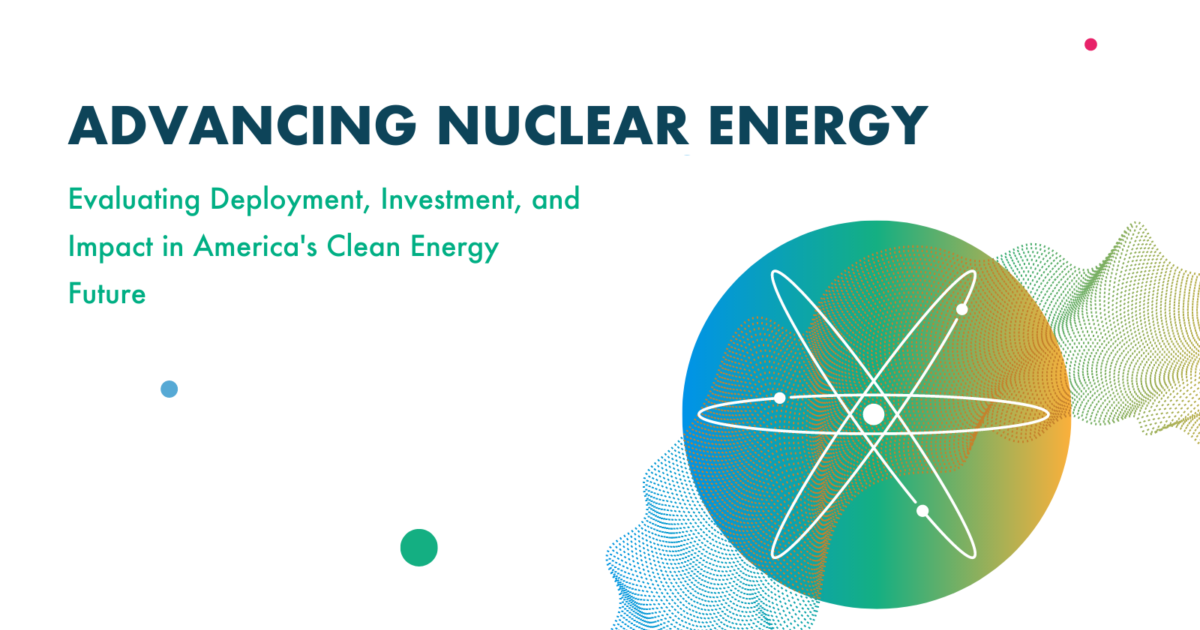
Advancing Nuclear Energy
Evaluating Deployment, Investment, and Impact in America’s Clean Energy Future
Note that the "Thorium-research" in 1970th was shut down because bomb-production was the real purpose of all nuclear development in the U.S., then, and now.
Now China, by contrast, is racing past the U.S. to build-out mankind’s thorium electrical-production future, instead of to focus upon producing the biggest nuclear-weapons stockpiles like the U.S. and Russia have been doing (to make bombs for potential usage against each other).
Now two USA's Senators want America, not China, to be leading the world into a far safer future.
Today there are:
Plans for New Nuclear Reactors Worldwide - World Nuclear Association
Plans for New Nuclear Reactors Worldwide. Information on the growth of global nuclear capacity with a table showing all under construction reactors.
33kft
Established Member
- Joined
- Jun 19, 2018
- Posts
- 2,189
- Qantas
- Platinum
- Virgin
- Gold
- Oneworld
- Emerald
This just isn't true. Inverters shut down once the voltage rises above a pre-set value, and have done so for a decade. All it can do is limit export to the grid.And now we have enormous amount of the roof solar panels pumping excess electricity into distribution network that wasn't designed for such conditions which create higher than normal voltages that could damage your appliances.
33kft
Established Member
- Joined
- Jun 19, 2018
- Posts
- 2,189
- Qantas
- Platinum
- Virgin
- Gold
- Oneworld
- Emerald
So did the original company building a cable between the mainland and Tasmania (Basslink), so I guess Tasmania is unviable too?Except the original company building the solar farm in the NT to export to Singapore went into liquidation.
Plus it's hardly a dead project, it's an extremely ambitious one with a $30bn investment needed to link Australia and Singapore. If you look back a few decades they said the same about the first underwater fibre optic links and now there's hundreds. After Twiggy and Cannon-Brookes disagreed on the amount of investment the vehicle they jointly owned went into liquidation and Cannon-Brookes acquired it himself, so it's a pretty poor argument against a technology when you have someone building something far more ambitious than has even been successful domestically previously and the evidence tabled is that a joint venture got sold to one of the two original investors. Oh no.
Last edited:
33kft
Established Member
- Joined
- Jun 19, 2018
- Posts
- 2,189
- Qantas
- Platinum
- Virgin
- Gold
- Oneworld
- Emerald
Neither of these are true. These are technologies which allow large amounts of power to be stored for long periods of time at low cost, that's the whole reason they aren't built on traditional battery technology, which cannot achieve this.However, these are small amounts of energy and also quite costly storage.
The constraint for these technologies is storage area.
Estimates put storage costs at around 2-4c per kWh. Comparitive lithium battery storage is 25-30c/kWh. It's really not expensive storage in anyone's measure

Geothermal energy storage is cost competitive with lithium-ion batteries, pumped hydro: pilot
While the pilot tested the technology for up to 18 hours of storage, Sage Geosystems is confident it could operate on a weekly cycle, or even provide seasonal storage, CEO Cindy Taff said.
It's interesting that the point being driven here is cost. Of all of the generation sources, nuclear costs have been increasing faster than any other fuel source:
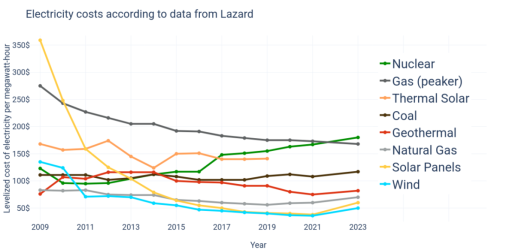
I agree that a multi-source mix makes sense, and nuclear should be a part of that mix. But the boogeyman BS that renewables will blow up your appliances is just silly. You can have both and be just fine, just ask China who generated 4.98% of their energy from Nuclear and 34% from renewables in 2022. No metrics on the number of exploding toasters though, sorry
Last edited:
Quickstatus
Enthusiast
- Joined
- Oct 13, 2013
- Posts
- 17,222
Lots of people are protesting the NIMBY new transmission lines which are required to upscale the renewables so the grid is 100% renewable. The problem is for the grid to be 100% renewable, there has to be a lot more than 100% nameplate capacity hence a lot of extra transmission lines.
p--and--t
Established Member
- Joined
- Sep 28, 2008
- Posts
- 4,705
- Qantas
- Bronze
- Virgin
- Red
Seems we have as many armchair future energy experts as armchair airline CEOs.
AFF is truly a wondrous place.
latawiec
Member
- Joined
- Oct 28, 2023
- Posts
- 267
... incorrect because l already stated that "New connections would be equipped in function that will cut off power export into the distribution network when upper voltage limit will be reached."This just isn't true. Inverters shut down once the voltage rises above a pre-set value, and have done so for a decade. All it can do is limit export to the grid.
....and you didn't read.
33kft
Established Member
- Joined
- Jun 19, 2018
- Posts
- 2,189
- Qantas
- Platinum
- Virgin
- Gold
- Oneworld
- Emerald
drron
Veteran Member
- Joined
- Jul 4, 2002
- Posts
- 37,403
Another example that shows you know little about the nuclear industry. F irst you could have used this graph from Lazard which shows the unsubsidised cost of generation.Neither of these are true. These are technologies which allow large amounts of power to be stored for long periods of time at low cost, that's the whole reason they aren't built on traditional battery technology, which cannot achieve this.
The constraint for these technologies is storage area.
Estimates put storage costs at around 2-4c per kWh. Comparitive lithium battery storage is 25-30c/kWh. It's really not expensive storage in anyone's measure

Geothermal energy storage is cost competitive with lithium-ion batteries, pumped hydro: pilot
While the pilot tested the technology for up to 18 hours of storage, Sage Geosystems is confident it could operate on a weekly cycle, or even provide seasonal storage, CEO Cindy Taff said.www.utilitydive.com
It's interesting that the point being driven here is cost. Of all of the generation sources, nuclear costs have been increasing faster than any other fuel source:
View attachment 360947
I agree that a multi-source mix makes sense, and nuclear should be a part of that mix. But the boogeyman BS that renewables will blow up your appliances is just silly. You can have both and be just fine, just ask China who generated 4.98% of their energy from Nuclear and 34% from renewables in 2022. No metrics on the number of exploding toasters though, sorry
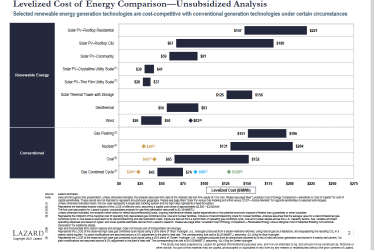
What you should note is the values in gold to the left of the graph. This represents the marginal cost of production in fully depreciated plants.
So why is nuclear so expensive in the USA? Because of regulation. Each nuclear plant must insure with a government mandated insure at a cost of $1 million a year. The fund has collected $4 billion and paid out $150 million.
But they also have to take out Secondary Financial protection at $20 million per year. That fund has taken in $14 billion and not a single pay out.
There are quite a few more regulatory costs.
Then turn to subsidies. This graph is for the USA and only has Federal subsidies. The States and local areas also have subsidies the large majority of which goes to renewables.
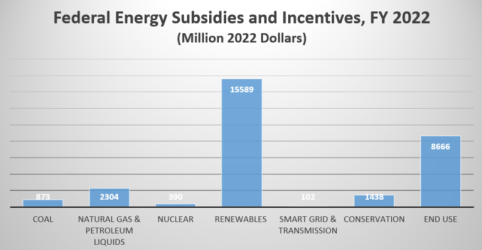
Source -Energy Information Administration.
Yet this is how much is generated by each method of generation.
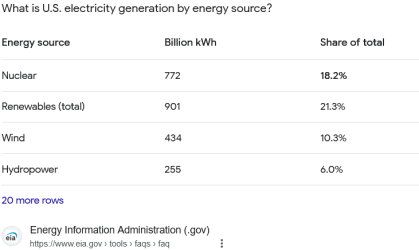
- Status
- Not open for further replies.
Become an AFF member!
Join Australian Frequent Flyer (AFF) for free and unlock insider tips, exclusive deals, and global meetups with 65,000+ frequent flyers.AFF members can also access our Frequent Flyer Training courses, and upgrade to Fast-track your way to expert traveller status and unlock even more exclusive discounts!

AFF forum abbreviations
Wondering about Y, J or any of the other abbreviations used on our forum?Check out our guide to common AFF acronyms & abbreviations.
Currently Active Users
Total: 1,129 (members: 9, guests: 1,120)







